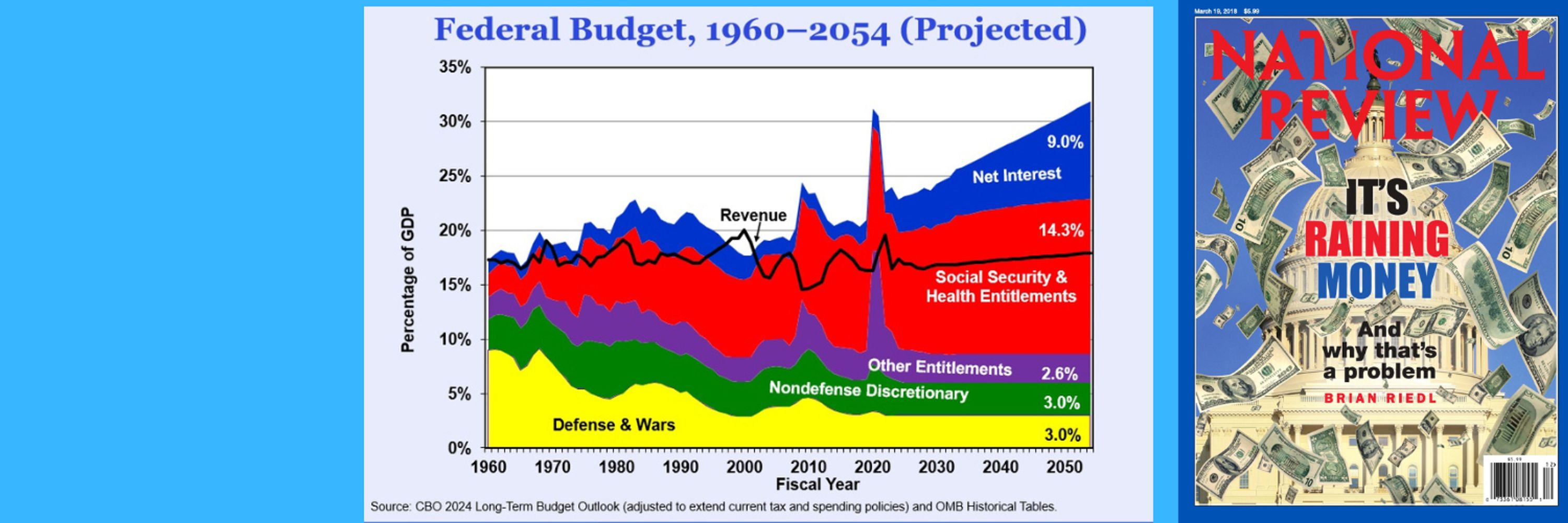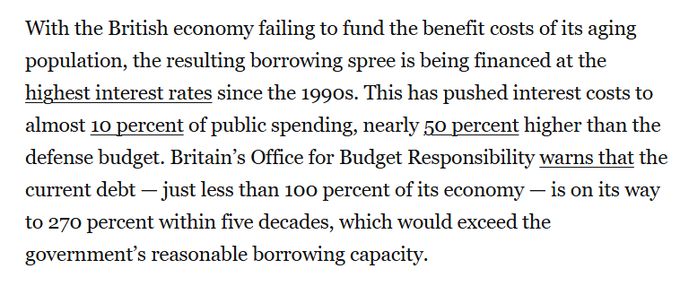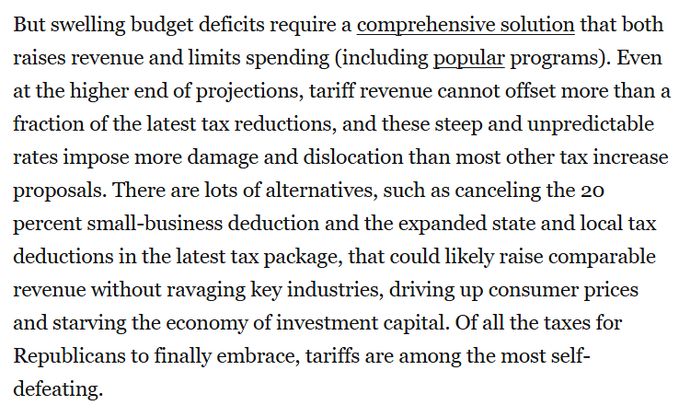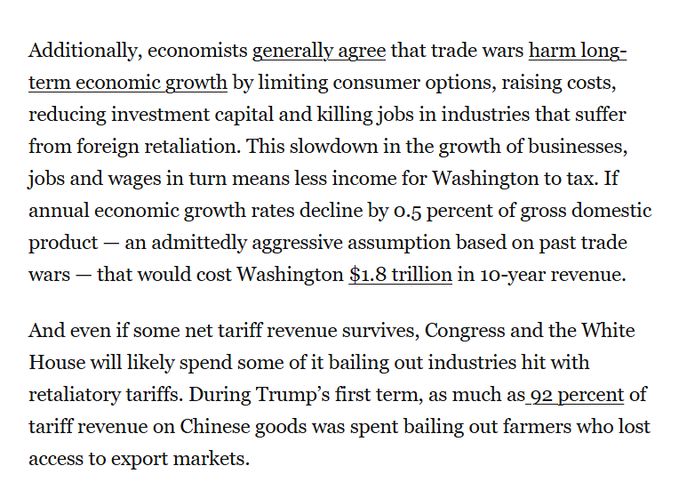
Haha, you're funny. The only evidence of DOGE savings is a $12 billion reduction in State Dept & foreign aid funding. And the IRS layoffs will cost more money than that in tax evasion and fewer audits.

Haha, you're funny. The only evidence of DOGE savings is a $12 billion reduction in State Dept & foreign aid funding. And the IRS layoffs will cost more money than that in tax evasion and fewer audits.



Politicians need to stop looking for easy, fake solutions and make the tough decisions on deficits. (/F)

Politicians need to stop looking for easy, fake solutions and make the tough decisions on deficits. (/F)


Thus, I estimate even a *full-point* cut in the Fed funds rate would save maybe $44 billion next year. White House OMB data shows even less savings. That's out of a $7T budget.

Thus, I estimate even a *full-point* cut in the Fed funds rate would save maybe $44 billion next year. White House OMB data shows even less savings. That's out of a $7T budget.
Also, the market determines the interest rate paid by the Treasury on its debt, and the Fed Funds rate has limited impact there.

Also, the market determines the interest rate paid by the Treasury on its debt, and the Fed Funds rate has limited impact there.
2021 - $352 billion
2025 - $1 trillion (approx)
2035 - $2 trillion (projected)
Interest has soared past Medicaid, defense, and Medicare to become the second-biggest item in the federal budget.

2021 - $352 billion
2025 - $1 trillion (approx)
2035 - $2 trillion (projected)
Interest has soared past Medicaid, defense, and Medicare to become the second-biggest item in the federal budget.
Sorry guys, you voted for this. Enjoy the consequences!

Sorry guys, you voted for this. Enjoy the consequences!

Instead, interest costs have tripled to $1 trillion and are the 2nd largest budget item after Social Security - and may double again within a decade. So even more debt.

Instead, interest costs have tripled to $1 trillion and are the 2nd largest budget item after Social Security - and may double again within a decade. So even more debt.
It means all growth must come from labor productivity, which itself is not great.

It means all growth must come from labor productivity, which itself is not great.
First, the demographic challenge is raising senior benefit costs while limiting taxpaying workers.

First, the demographic challenge is raising senior benefit costs while limiting taxpaying workers.
Same issues:
- Aging population and low fertility rates slow economic economic growth & tax revenues.
- Senior benefit costs soar.
- Resulting deficits worsened by rising interest rates.

Same issues:
- Aging population and low fertility rates slow economic economic growth & tax revenues.
- Senior benefit costs soar.
- Resulting deficits worsened by rising interest rates.

Moreover, a president could acquire corresponding power to unilaterally *add* spending in this post-constitutional world.

Moreover, a president could acquire corresponding power to unilaterally *add* spending in this post-constitutional world.

First, because it essentially removes Congressional representation from the operation of govt programs, giving the president near-dictatorial powers over them.

First, because it essentially removes Congressional representation from the operation of govt programs, giving the president near-dictatorial powers over them.
1) As chief executive, the president has wide discretion over which laws to follow or ignore.
2) Trump was elected with a mandate to cut spending, which supercedes any legal limits.
Both arguments are absurd.

1) As chief executive, the president has wide discretion over which laws to follow or ignore.
2) Trump was elected with a mandate to cut spending, which supercedes any legal limits.
Both arguments are absurd.



And much of the net tariff revenues that do survive will likely once again bail out industries (like agriculture) hit by foreign retaliation. Leaving perhaps $800B/decade.

And much of the net tariff revenues that do survive will likely once again bail out industries (like agriculture) hit by foreign retaliation. Leaving perhaps $800B/decade.

